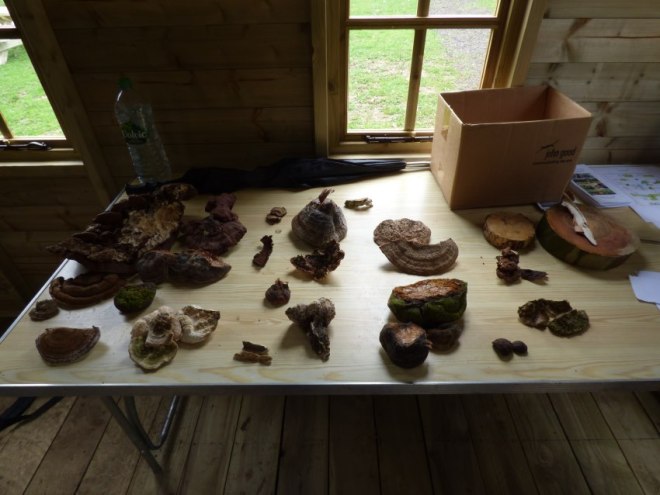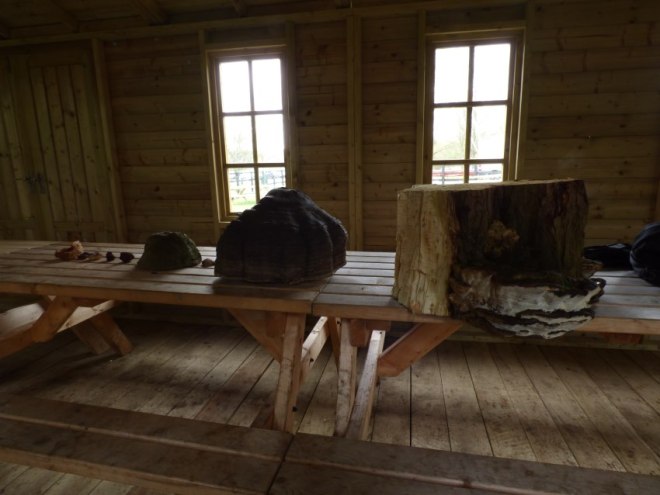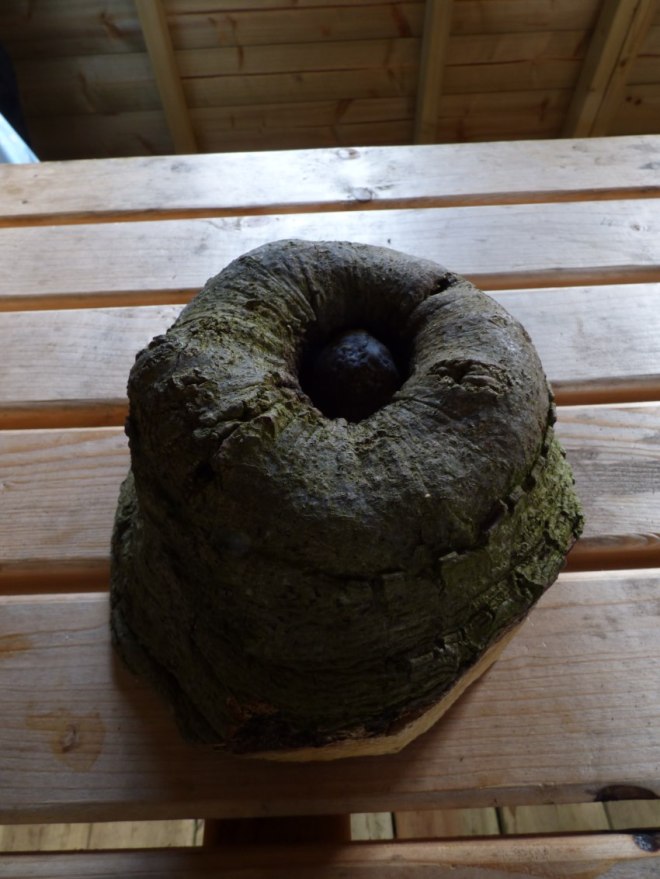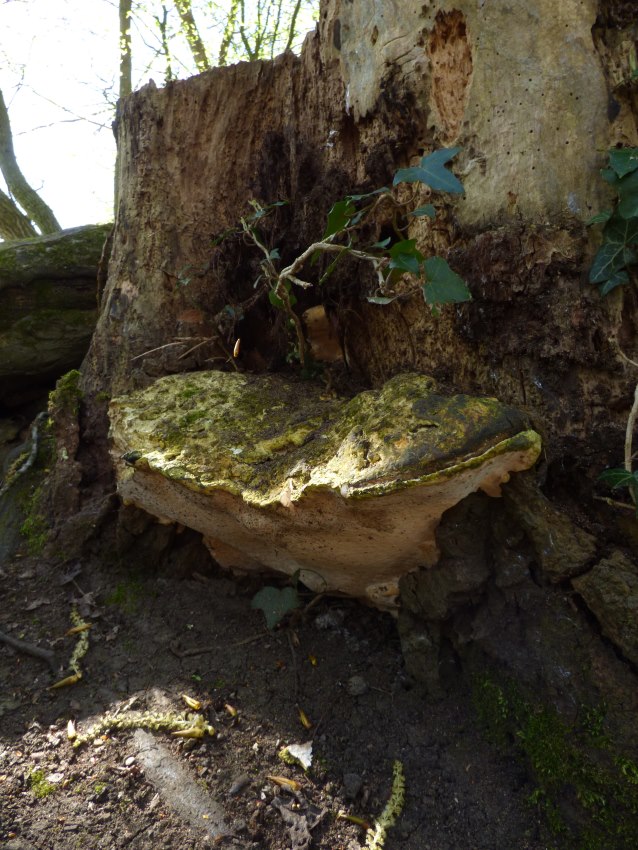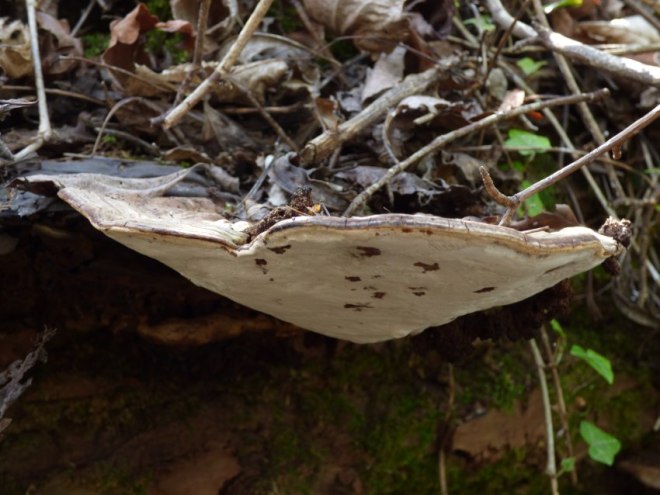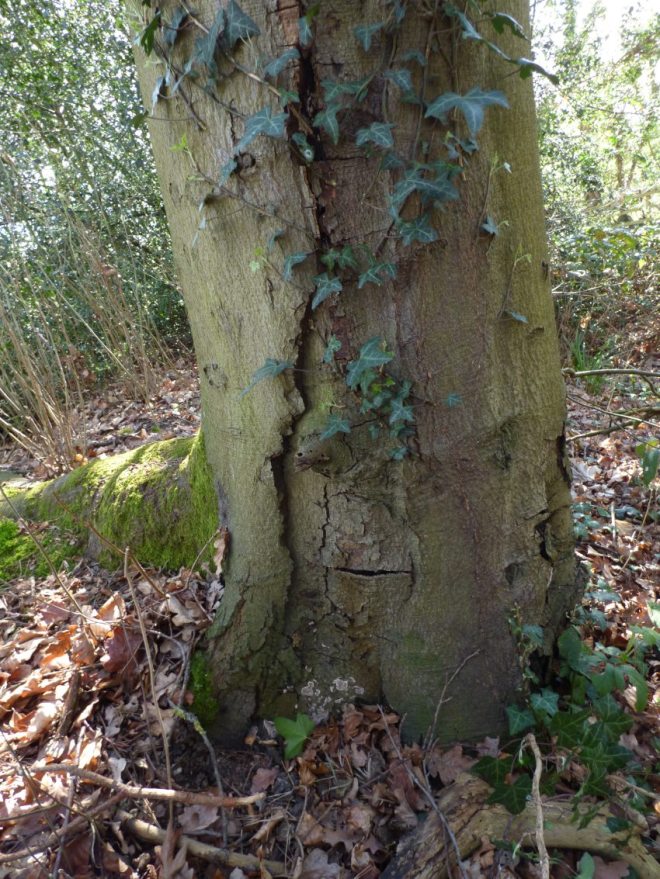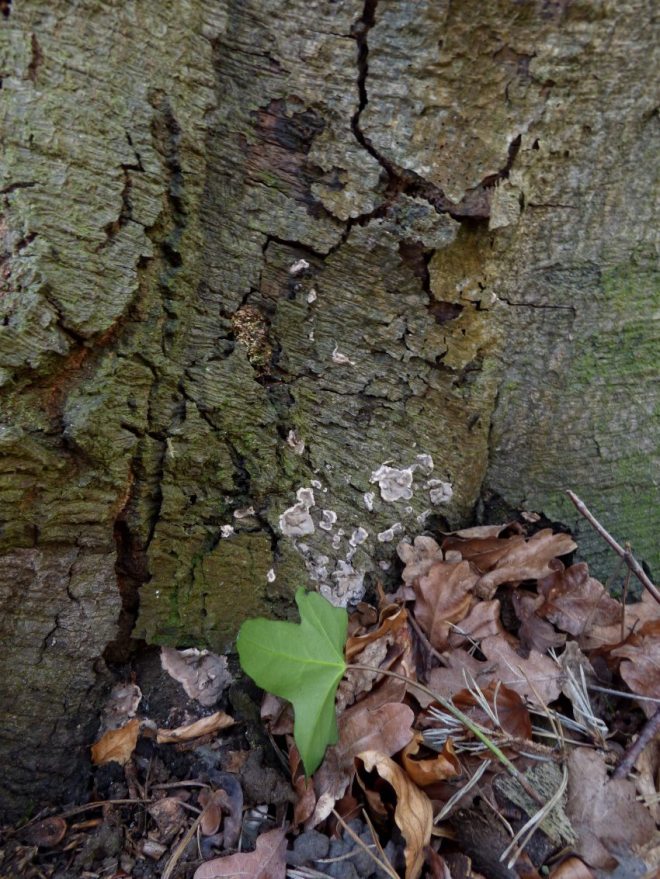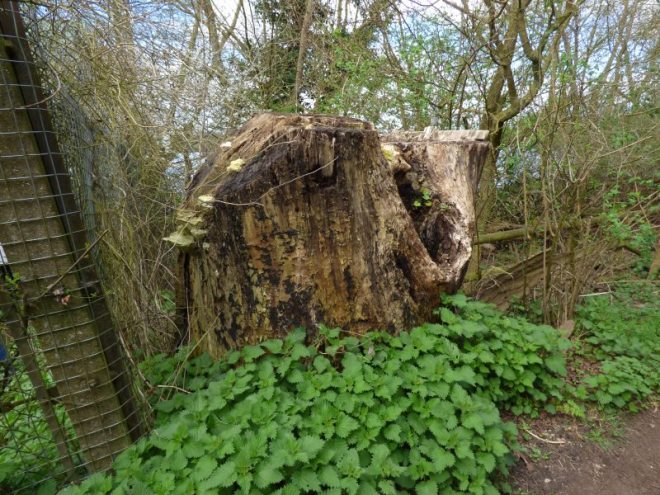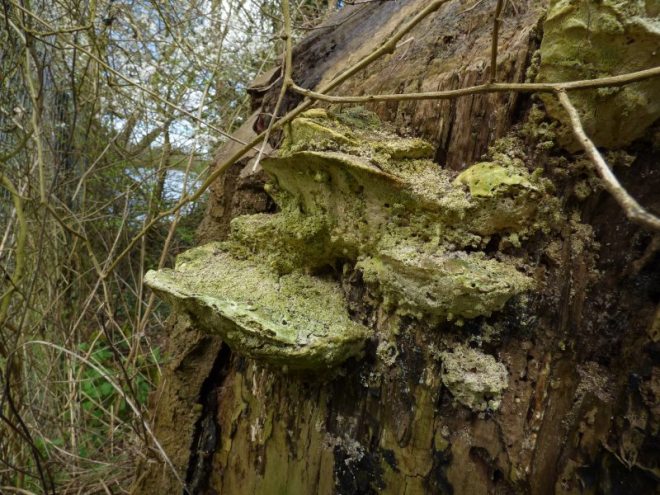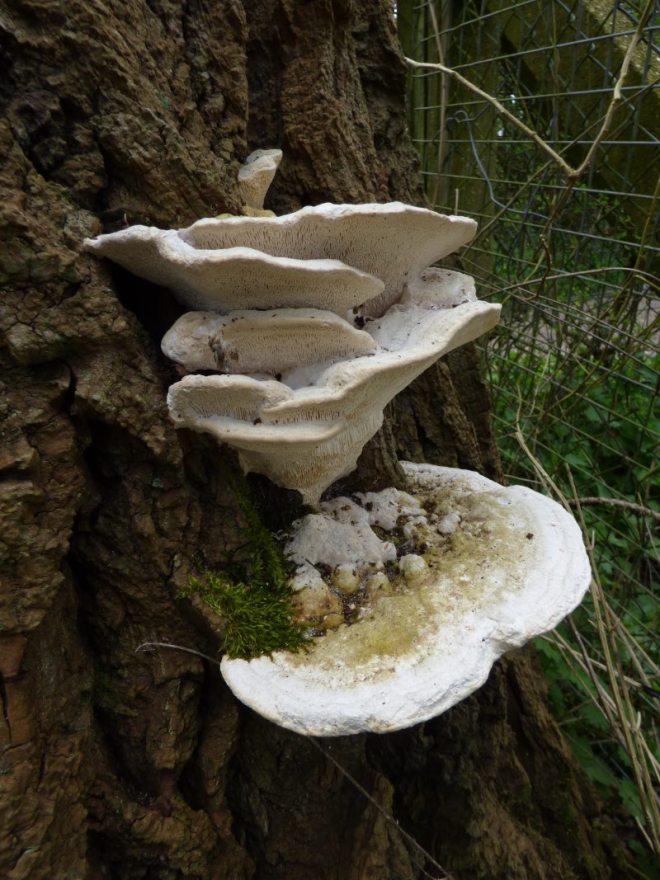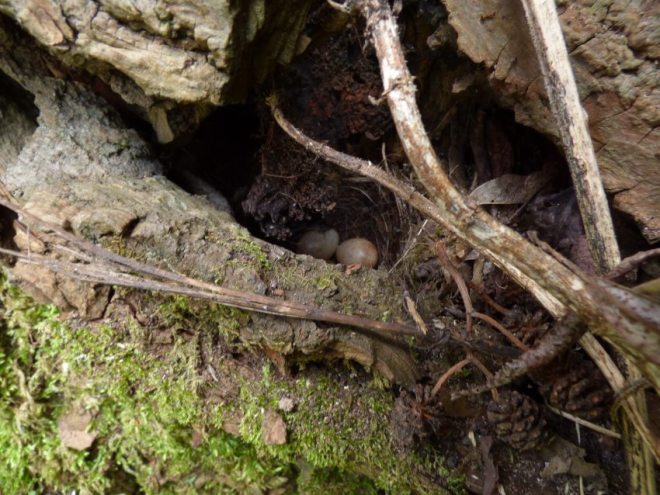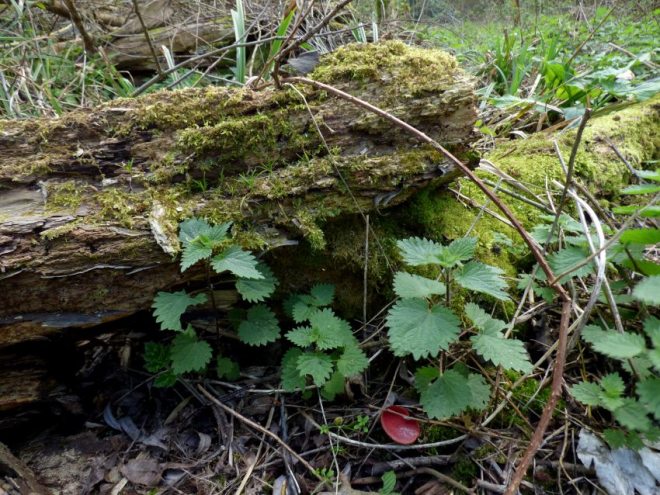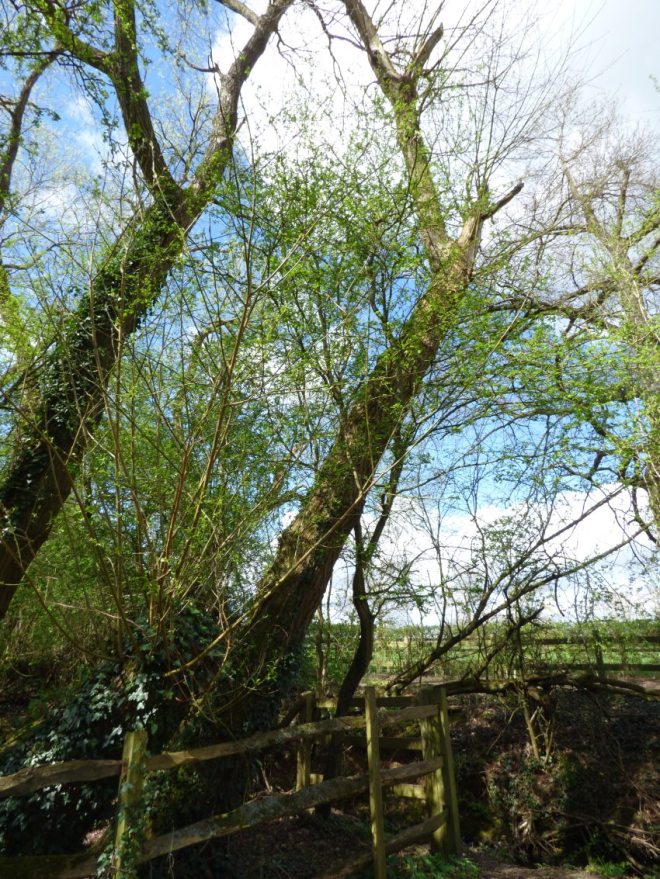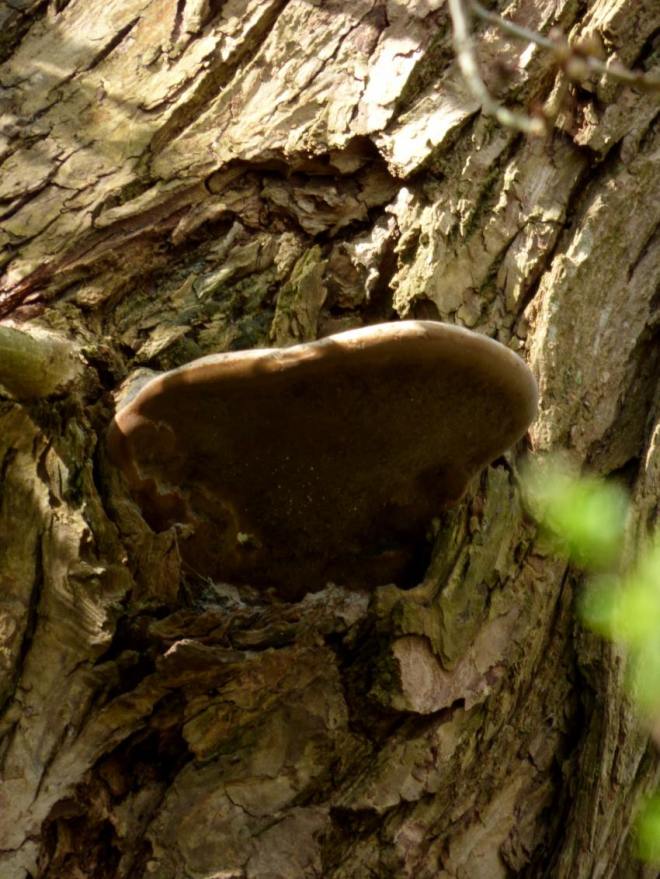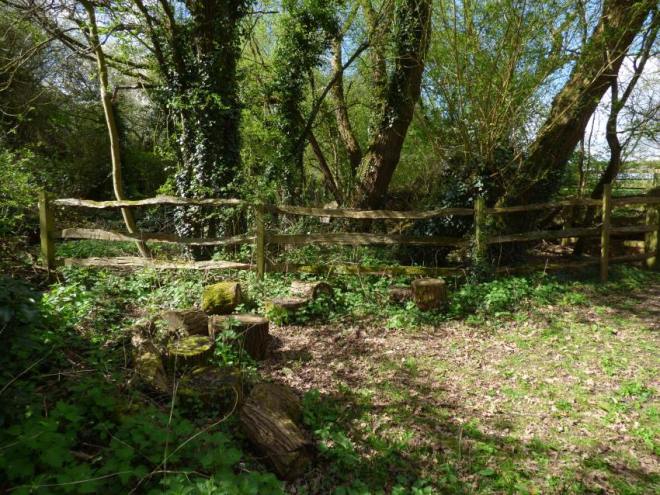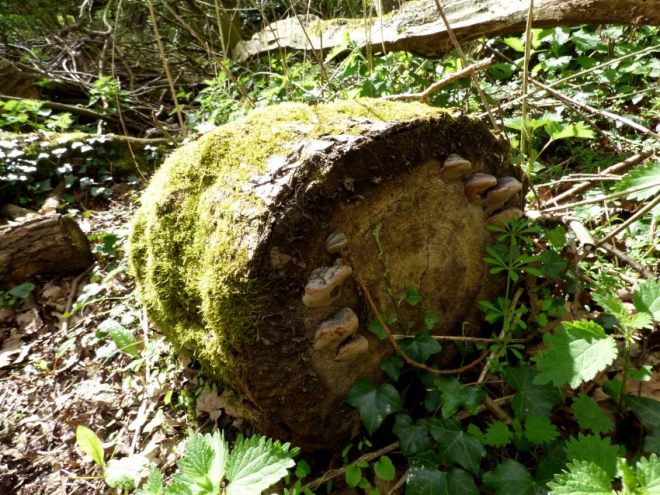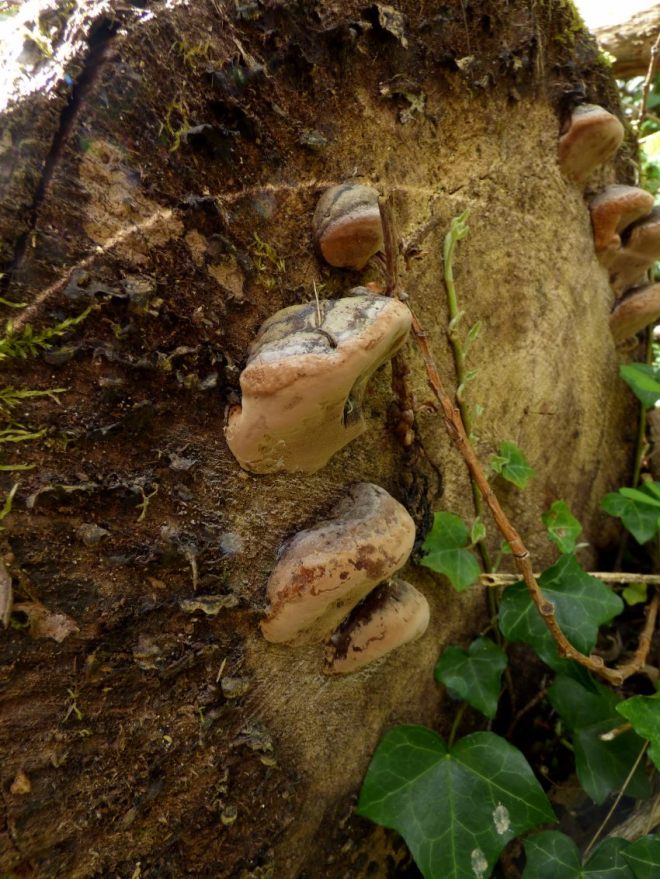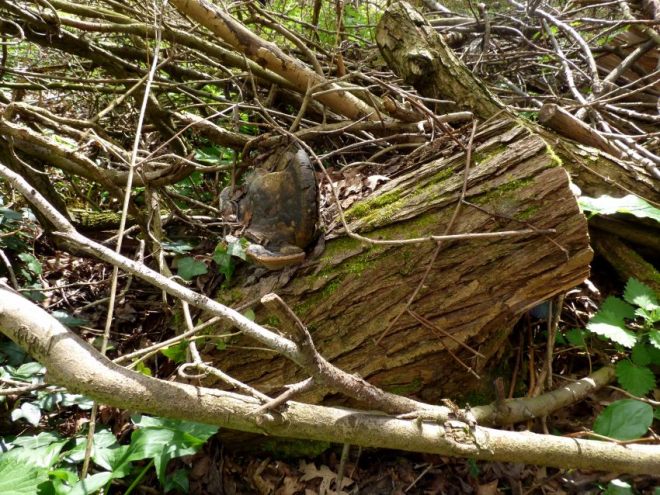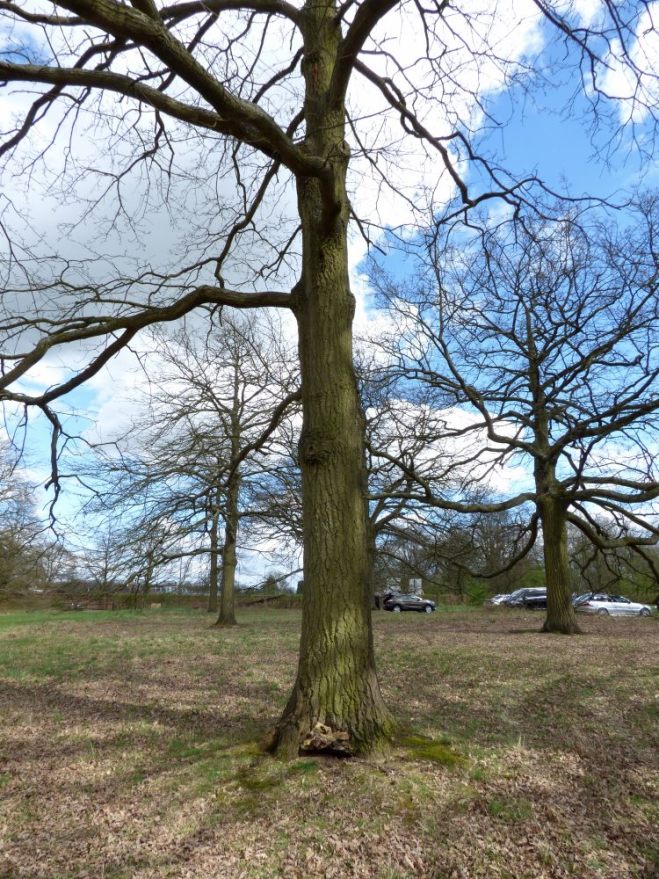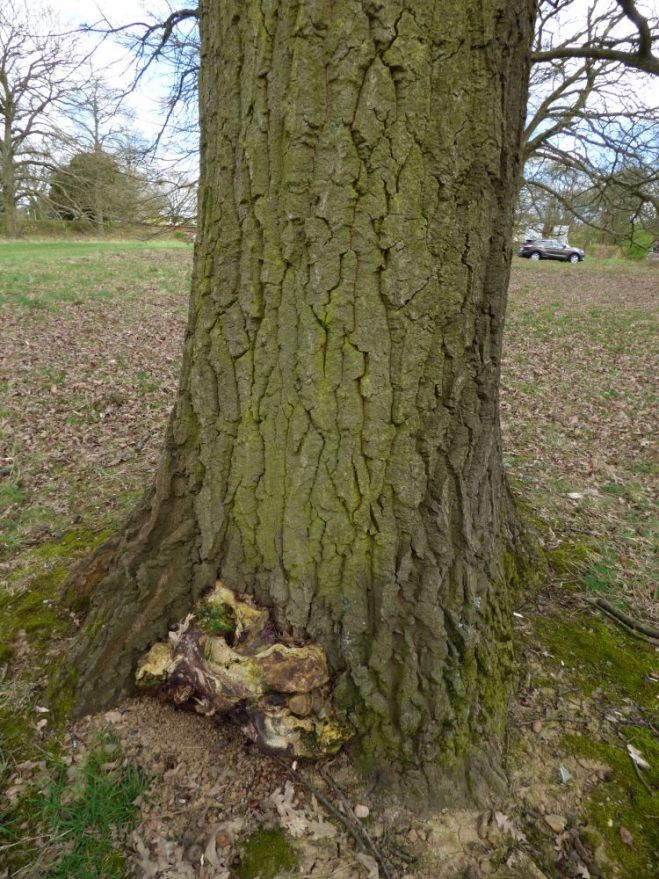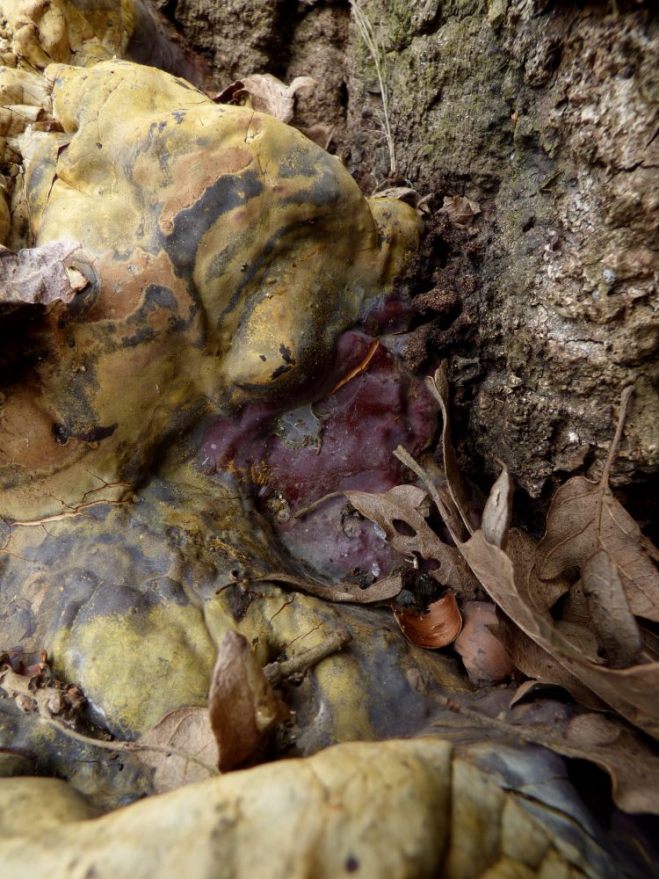First and foremost, for those interested in purchasing the English version of the book, you can do so via the publisher Patzer Verlag, Summerfield Books or the Arboricultural Association. It’s not a cheap book and thus, for many, demands strong consideration before purchase, which is one of the core tenets behind why I wanted to read and review this book promptly following on from its publication. Therefore, my intention with this review is to give more information about the book over and above simply the listing of the chapters and sub-chapters, which are provided by the book sellers. Hence, interspersed amongst my review are photographs of the book, which will hopefully help guide you in your decision-making process. In fact, here’s an image for you, off the bat!

As regards the content, therefore, the book begins with a very succinct introduction followed by an extensive assessment of the countless aspects pertaining to tree biology. This biology section is adorned with illustrations that, as is the case across the entire book, help greatly with the simple conveyance of the core messages put forth by the authors – indeed, as is so prevalent and well-received across Mattheck’s works (in spite of the disagreements the autors have with the t/r ratio and h/d ratio, which they detail within). Somehow, I doubt this inclusion of illustrations is coincidental and instead a homage or emulation of what works well when describing detailed concepts in only a few words. Critically, with a book detailed as one that covers tree statics, the incorporation of tree biology into the statics model is included, which keeps the book on track from the beginnings and saves it from veering off course into just one that echoes prior understanding.
At this point, an interjection is necessary. Specifically, for the purpose of highlighting some of the very curious qualities of this chapter – in the good sense. Principally, an addition to the developing understanding of summer branch drop is provided, whereby the authors detail that, on top of the impact drought has on the failure of large branches, temperature plays a possibly significant role. Why, you ask? Because, as the authors detail, the pretensioning of a tree’s wood fibres (i.e. the manner in which it loads itself under its own weight and optimises itself for this) is lessened by heat, which relaxes the wood fibres – including atop branch junctions. When compiled with the fact that trees are much stronger under tension than compression, the developing compression zones underneath the branch junction (and just behind the branch collar) as the wood fibres relax atop build up and, alongside other factors (including drought and probably many other unknown variables), the branch can subsequently suddenly fail. The authors delve into this phenomenon more in the third chapter and beyond. Other intriguing and enlightening aspects of this second chapter include the remarks on how construction works impact upon tree stability, in addition to the efficacy of ivy to be both a bane and a blessing for the tree, as regards oscillation and damping during wind loads.
It is however the third chapter that arguably provides the most appreciable benefit to the reader, as it takes us into the realm of tree statics in the direct sense. The intricacies of the chapter will, of course, largely evade this review, as the intention of this post is not to ‘spoil’ the contents of the book to any marked degree and make its purchase redundant. Instead, what can be said is that it delves effectively into critical facets of statics and, in my personal opinion, the segment on wind loading and the impact of crown architecture and elevation on loading forces is most brilliant – even down to the illustrations and mathematical examples, which really do simplify an evidently complex engineering approach to tree risk assessment.

Moreover, the discussion on the importance of hollowness for trees and why it should not always be considered a concern to the tree inspector is welcomed (unless it’s an open cavity and then, please, do be more worried straight off of the bat). In fact, and I quote: “the dimensions of a cavity in a tree have absolutely no informative value, as long as the occurring loads are not known.” Therefore, the t/r ratio Mattheck provided, the authors allege, is meaningless and incorrect.
Amazingly (from a factoid perspective), the authors then detail that a tree with a dbh of 1m and a central cavity leaving only 10cm of sound radial wood around the circumference has the same load-bearing capacity as a tree that is completely sound and has a dbh of 84cm! Of course, from an angle of understanding where the maximum loads occur, the fact that wood fibres stretch and compress far more at the outer sections of the stem than they do internally (with the neutral axis generally being the centre) gives credence and context to this assertion. The understanding of hollowness on older (veteran) trees is also discussed in a very articulate manner and, as it so seems, the greater risk for such trees is not failure of the trunk or root plate but of large lateral limbs attached to a hollowing trunk that can no longer sufficiently support such a mechanical load.
On this note, the outlining of root plate architecture is also deserving of mention. In this third chapter, the authors do a superb job of explaining why and how root plates fail and why, for all intents and purposes, extensive buttressing and adventitious rooting is not necessarily to be looked upon as defective. Using the example of a mature beech (see a below photo that I took recently), they allude to the often very pronounced root plate acting as a counter-balance to the lever arm that is the trunk (think of a very wide-based wine glass and compare it to a narrow-based one – which tilts more readily?). Indeed, where fungal decay is evident, as in the below photo, the effectiveness of the wide root plate comes into question, however.

At this point, the notion of slenderness also enters the equation and, very curiously, the book asserts that slender multi-stemmed trees are more likely to oscillate excessively in wind loading conditions and fail, when compared to single-stemmed trees of equal slenderness. However, more crucially, why slenderness equals higher oscillatory frequency and thus denotes a greater risk of failure is detailed, which drives home the importance of not thinning out groups of trees and expecting the remaining ones to be able to stand wind-firm (the so-called ‘domino effect’ is also defined, whereby trees at a woodland edge successively fail, as those around become exposed after an initial tree fails and then those around it also fail).
And my favourite quote(s) of the third chapter? In reference to reaction growth laid down by the tree due to decay or other structural matters: “the development of symptoms is an expression of the vitality of the tree, not of its weakness” and that “focussing on so called symptoms can be absolutely counterproductive” – assuming, of course, you don’t quantify the weakness by ascertaining its load-bearing capacity (which is where statics comes in). Assumptions, therefore, are not good (though we all do assume, every day, when we assess trees, when working with outward symptoms solely).

Moving into the fourth chapter, we’re first greeted with a rather novel take on tree assessment: do not negate the emotional aspect of the act. To be precise, from this, I understand it as the authors inferring that the intuitive assessment of a tree, from afar, takes into account both our logical deduction of its form (based on the scientific understanding of what denotes good structural architecture in trees) and surrounds (targets, exposure, etc) and also its innate emotional ‘appeal’ (i.e. is the tree ‘harmonious’ and flowing well, or is it a rough and jagged structure that is abrasive to the eye and clearly there is something awry that demands more investigation). Here, the authors then throw in the concept of a female breast being harmonious (and not at all like a brick…!) to a child, who can appreciate the allure of that particular aspect of female anatomy for its biological purposes. I presume this wasn’t a translation error (of which there are a few, across the entire book, but it largely flows very well)! Thus, trees are like female breasts: harmonious (I could end the review here, quite frankly, for the comedic value).
Anyway, this fourth chapter then goes on to outline, to a very detailed degree, with the support of various diagrams in the sixth chapter (the ‘Annexes’), more about SIA (static integrated assessment). For something that I admittedly had considered quite complex, which it still certainly is, the authors do a stellar job in simplifying the concept and utilise diagrams and drawings to help ensure the reader can understand the message being conveyed. The explanation of the rationale behind why this methodology, provided in preceding chapters and also in this one, helps to contextualise the methodology and, quite truthfully, it’s a form of tree assessment that I am now keen to put into some form of practice. The statement the authors make about microdrills essentially being redundant now that sonic tomography has arisen from the mulch is also a curious one, which is deserving of some consideration, when appreciating that the former causes damage to trees and the latter, almost wholly, does not; in addition to the ability for a tomograph (i.e. PiCUS or ARBOTOM) to plot an entire cross-section and not just track the path of a single drill bitand provide information from that sole path.
A further useful segment within the fourth chapter is that of the pests and pathogens of the leaves and shoots of many common European tree species and genera. Indeed, the assertion that horse chestnut leaf miner is not solely an aesthetic issue is a welcome one, as for whatever concerning reason that understanding of it being only an aesthetic pest is still accepted by some in the industry. The section also has a really nice little bit of information on Massaria disease of plane, with a distinct Teutonic angle (as one would expect, from German authors).

The (‘technically’) last chapter, the fifth, draws upon the information provided within all prior chapters and provides the reader with guidance on how to, following the identification of a need to manage the tree (be it a newly-planted tree or veteran in a park or construction site), effectively enact a management regime that will be of benefit to the longevity of the tree in the landscape (this is why we manage many trees in ways that doesn’t see them get felled). Indeed, this chapter presents a lovely succinct look at the need to strongly consider management options, as in deciding upon a route there is then, in theory, no going back upon that decision (once scheduled work has been completed).
The encouragement by the authors to refrain from using a rigid support system, be that system a stake for a young tree or steel braces for old trees with slender co-dominant limbs, and instead utilise a flexible and dynamic system, is therefore well-received, as they present their argument in a sound and logical manner. Importantly, for bracing, the authors even go so far as to detail what angle a brace should be applied at and the load that it should be able to bear relative to the size of the parts being connected, which elevates this book to a level beyond that of others that, from memory, do not provide as much detail. Their comments on propping with A-frames and not upside-down V-frames are also welcomed and articulated so well with so few words. Again, illsurations really help instruct the reader and break the text apart, thereby making the reading more ‘bite-sized’.

Finally, the appendices presented in chapter 6, which support many of the assertions made in the earlier chapters, arrive. There exist some fabulous tables showcasing the wood properties of different tree genera (cellular make up, strength, etc), the speed at which tree genera move water up the trunk in metres per hour, the compartmentalisation ability of different species and genera, and a comparison of various forms of tree assessment and their strengths / weaknesses. Also within these annexes is information on how hollow trees fail and a description of principal wood-decay fungi and their significance. The fungal section is limited in detail and species diversity (because it’s only an annex and thus cannot possibly be as detailed as a dedicated book on fungi) though, concerningly, the brittle cinder (Kretzschmaria deusta) is described as a white rot in a comparitive table (whilst being correctly marked as a soft rot in its descriptive text). Proofing of the text should have picked this up, as it is perhaps the most significant mistake in the book (all other issues identified are largely translation errors or typos, from what I could spot). The comments on Perenniporia fraxinea preferring robinia (Robinia pseudoacacia) over any other host tree in urban areas where soil is compacted are, nonetheless, very interesting. Anecdotally, I can understand and agree with this assertion.
So, my thoughts to summarise? This is a very useful book that serves not only as a primer for the statics integrated assessment model but also for tree visual assessments on the whole. The eagerness of the authors to promote analytical thinking of the reader was pervasive throughout and, in some respects, this book could essentially serve as a 101 for tree inspections and management to any tree inspector. Of course, the title alludes to this by referring to tree inspection, though I admit I was taken aback (in a positive sense) on how much breadth this book covered in so few words and so many images. For me, the mix works well and therefore the looming threat of a wall-of-text was evaded. Perhaps it is just me, though I can pick up influences from Shigo and Mattheck, in the use of few choice words to describe complex matters and to support such words with harmonious (see what I did there?) images.
If you have around £115 to spend and want a book that you can refer to routinely, this will be worth purchasing. Don’t think you’ll be getting an impossibly wordy book that delves into tree statics down to the minute level, however. That is reserved for other literature and, in my perspective, rightly so.

